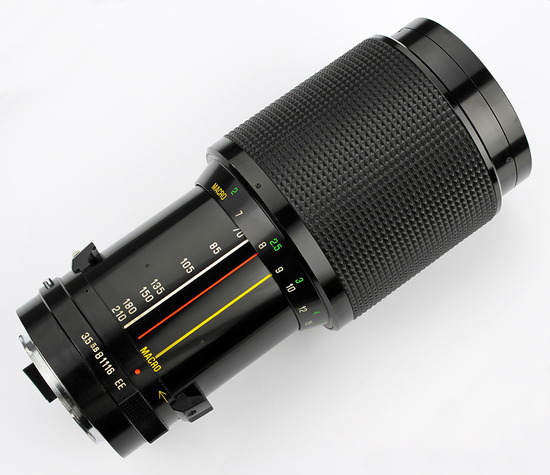
The complexity of the lens lead to an unusually long development period extending from 1970 through 1974.
#Vivitar 70 210 series 1 price series
While this is the original and most well-known Vivitar Series 1 70-210mm lens, it was eventually replaced with other 70-210mm lenses with varying specifications, produced by several different manufacturers. You have an optical warehouse in one barrel. To this add incredible resolution and contrast and the convenience of single control focusing and zooming. One of the most remarkable lenses ever built, the 70-210mm provides true zooming from long-tele through normal ranges, down to macrophotography (as much as 1:2.2 magnification).

Wolf in 1980, has this to say about the lens: As a practical, usable lens, there is none superior.įinally The Vivitar Guide, written by John C.
#Vivitar 70 210 series 1 price plus
In summation, we would say that the Vivitar Macro Zoom is truly a remarkable accomplishment in which the designers have attemped and largely succeeded in providing a flexibility of close focusing, convenience of one touch control, plus compactness and lightness all in one package. Betensky of Opcon Associates in Stamford, Conn., and then mechanically optimized and prepared for manufacture by Rénzow Watanabe of the engineering division of Kino Precision Industries, Ltd (Japanese manufacturer of the lenses for Vivitar) were considerable. The growing pains of a lens which was optically computed by Ellis I. In 1973 and even as late as May 1974, the lenses we reported on were evolutionary and not final. 1972, did an extensive coverage of its practical general applications in March 1973 and analyzed and compared its macro abilities as recently as May 1974.

The Modern Photography Photo Buying Guide, 1977 edition offered a large, multi-page, comprehensive review of the lens (sn:22410910) and also included information concerning the history of the lens. The January 1974 issue of Popular Science offers this praise for the lens:Īvailable since mid-1973, the 70-210mm f3.5, first macro-focusing automatic zoom lens for 35mm single-lens reflex cameras, delivers impressively high performance throughout its focal-length and focusing ranges, comparing favorably with top-drawer nonzoom telephoto and macro lenses. You're still focused at 6 1/2 feet, but now you're in macro range, ready to focus on any object down to 11 1/2 inches away from the focal plane - which is as little as three inches from the front lens surface. Pull the control sleeve back to its 210-mm setting, push a latch button on the left side of the lens barrel, twist two finger grips left to align the yellow "Macro" inscriptions on the barrel and sleeve, and things start happening inside the lens. I found the lens as sharp and contrasty as my conventional 135-mm tele at all distances from infinity down to its minimum focusing distance of about 6 1/2 feet.but that's just the beginning of this new Vivitar's close-up capability. the designers of Vivitar's new Series 1 lenses have come up with the closest approach to my dream lens yet: a sharp (I wouldn't say ultrasharp), reasonable-sized, 70 to 210-mm f/3.5 zoom telephoto that focuses down to about three inches.though I've been reluctant to use zooms before (I've found them awkward and unsharp), I took to this one like a duck to water. Here are several excerpts from a lengthy review in the June 1973 Issue of Popular Mechanics: Betensky of Stamford, CT as the inventors. The patent lists Rinzo Wantanabe of Tokyo, Japan (probably Rénzow Watanabe of Kino Precision), and Ellis I. U.S Patent number 3,817,600 was granted in 1974 for the invention of a Zoom lens having close-focusing mode of operation. Betensky's design was then manufactured by Kino Precision.

Betensky had developed an early auto-optimizing optical design program that he ran on a mainframe computer owned by Perkin Elmer. Vivitar's specifications were turned into a lens design by optical engineer Ellis Betensky of Stamford, CT. Its patented ability to switch into macro mode was eventually adopted by nearly every major camera and lens manufacturer in the world. Among other innovations, it is notable as the first macro focusing zoom lens. It was the first Vivitar Series 1 lens and was considered revolutionary for its time.

The Vivitar Series 1 70-210mm f/3.5 VMC Macro Focusing Zoom lens was designed for and marketed by Ponder & Best (later Vivitar) in the 1970s.


 0 kommentar(er)
0 kommentar(er)
